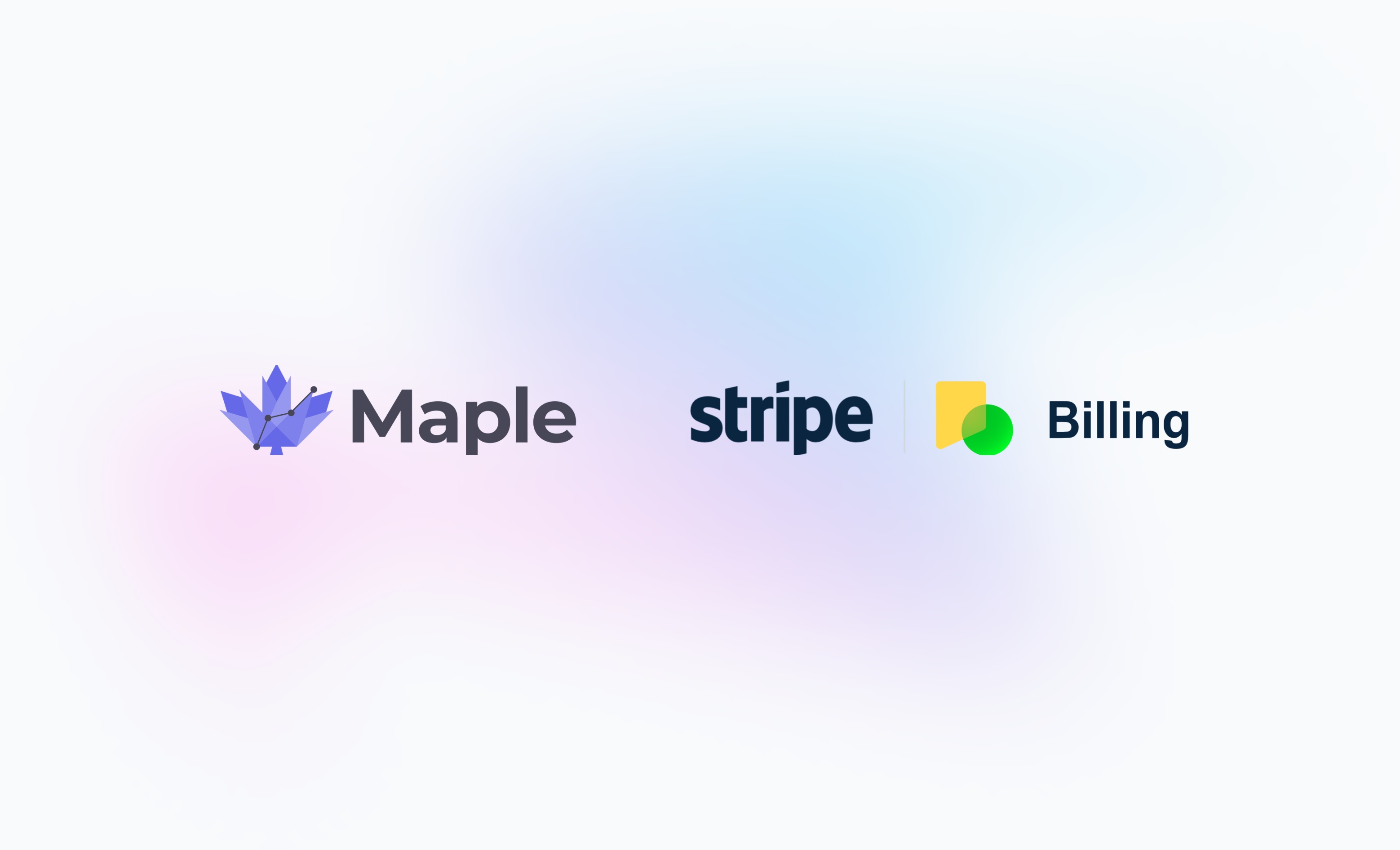Why Businesses Pick Maple Over Stripe Billing
As businesses evolve, their billing requirements often become more complex, prompting many to seek alternatives to Stripe Billing. Understanding the reasons companies transition to these platforms can provide valuable insights for organizations evaluating their billing solutions.

Challenges with Stripe Billing
Stripe Billing is renowned for its seamless integration with the rest of the Stripe ecosystem, making it a popular choice for businesses initiating their billing processes. However, as companies grow, several limitations become apparent.
- Vendor Lock-In: Stripe Billing necessitates the exclusive use of Stripe Payments, which can be restrictive for businesses seeking flexibility in supporting different locale specific payment processors and takes away the advantages of better processing rates with other providers.
- Limited Support for Complex Pricing Models: The platform offers basic support for usage-based billing, often requiring businesses to pre-aggregate usage data, complicating the billing process. Furthermore, there's no support for complex deal structures like multi-phased or ramped deals which are common for sales-led deals.
- Cost Implications: Stripe's pricing structure, charging a percentage of transaction volumes for billing, can become costly as a business scales.
Why Businesses Opt for Maple
Maple addresses several of the challenges posed by Stripe Billing, offering features tailored for growing businesses.
- Comprehensive Billing Mechanisms: The platform provides native support for complex pricing models, including event-level usage metering and credits management, facilitating accurate and efficient billing. There is also support for existing models like seat-based billing, allowing businesses to implement pricing strategies that align with their offerings.
- Flexibility with Payment Processors: Maple integrates with various payment gateways, reducing the risk of vendor lock-in and allowing businesses to optimize their payment strategies.
- Support for Sales-Led Businesses: Unlike Stripe, which is optimized for self-serve models, Maple is designed to accommodate custom contracts and deal terms, making it suitable for sales-led organizations. The platform also provides integrated contract management to facilitate quote generation, approval workflows, and contract renewals, streamlining the sales process and ensuring consistency between contracts and billing.
- Extensive Integrations: Maple integrates deeply with various payment providers, sales and CRM platforms, tax providers, and accounting systems, ensuring seamless operations across business functions regardless of the sales motion.
- Cost Efficiency: Maple offers a predictable pricing model designed to scale with businesses without unexpected uncapped cost increases.
Elevate Your Revenue Management
While Stripe Billing serves as a solid foundation for businesses starting out, growing companies often encounter limitations that necessitate a more adaptable and feature-rich billing solution. Maple offers the flexibility, comprehensive features, and scalability required to support complex billing needs, making them attractive alternatives for organizations aiming to optimize their revenue management.
Learn more about our robust billing capabilities.